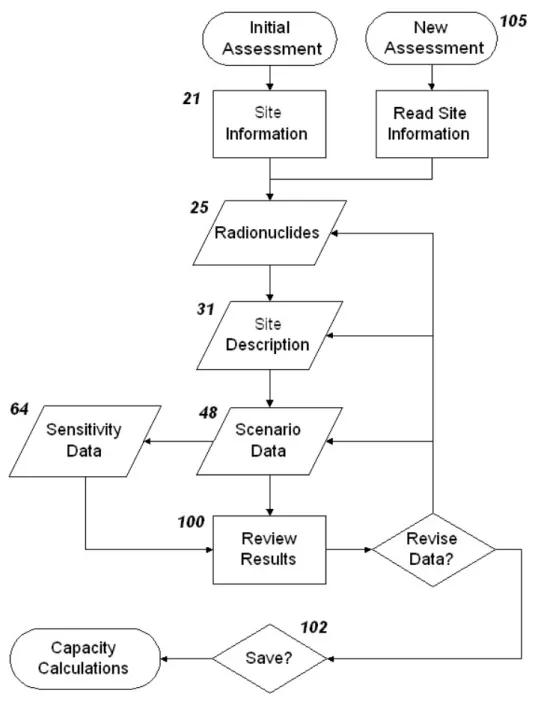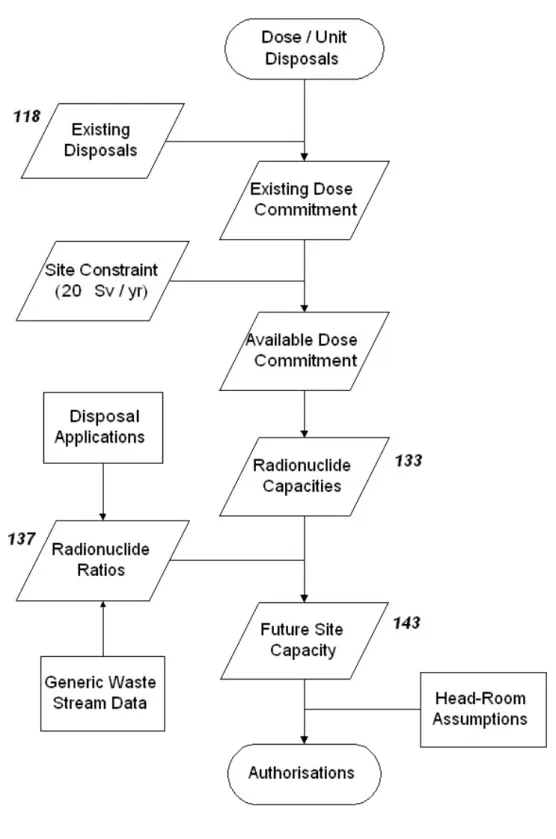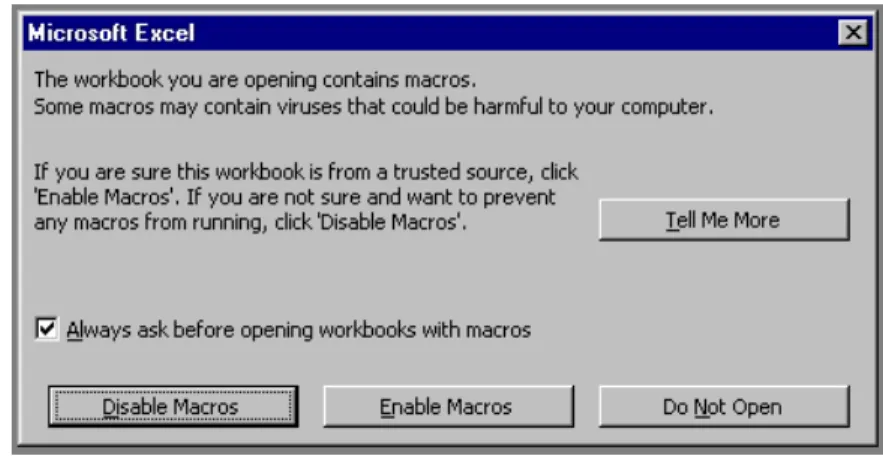Its members, employees or agents do not accept any liability for any loss or damage arising from the interpretation or use of the information, or reliance on opinions contained herein. This report is part of a research project that aims to establish a framework for assessing the suitability of controlled landfills to accept the disposal of solid low-level radioactive waste. The framework encompasses the overall process of determining whether landfill sites are suitable for accepting certain types of low-level radioactive waste.
When assessing landfills for their environmental impact, the sources, pathways and receptors that can cause environmental damage must be identified. In addition to the generic elements of the assessment context, there are elements of the assessment context that must be determined location-specifically. In addition to describing how to use the spreadsheet, this report describes the parameters required to perform the dose assessments.
The main principles on which the framework is based are described in more detail in the Principles Document: Development of a Framework for Assessing the Suitability of Controlled Landfills to Accept Disposal of Low-Level Solid Radioactive Waste: Principles Document (SNIFFER 2005). Details of the models supporting the dose calculations, and hence the calculation of potential radiological capacity, are presented in: Development of a Framework for Assessing the Suitability of Controlled Landfills to Accept the Disposal of Low-Level Solid Radioactive Waste: Manual of Technical Reference (SNIFFER 2006a). This document describes the use of the model, which is provided in the form of an Excel spreadsheet, and includes information on possible sources for the information required to run the model for a specific site.
The normal user interface does not allow changing the final set of parameter values, but manual editing of the underlying data dictionary can be done by experienced users if required.

2 Installation
3 Dose Assessment Calculations
Initial Dose Assessment
The parameters on the five tabbed pages on this screen describe the general characteristics of the site and the main scenarios that are evaluated. The effectiveness of the cap is a key control on the amount of infiltration and thus on the groundwater pathway. The hydrogeological risk assessment and Site License Application must include information on the characteristics of the geological barrier.
Some methods used for leachate management can result in the generation of aerosols that can be inhaled by workers or members of the public. The Assessment Model assumes that knowledge of the previous use of the site will be lost at some point after site restriction and closure. For the calculation of potential doses to intruders, the Assessment Model assumes that the excavated material includes all the SPB removals.
This may be appropriate for sites where SPB deposits are widely dispersed rather than concentrated in one part of the site. The next "Sensitivity Studies" screen allows the user to change some of the reference values used in the assessment model. Each of the parameters available for editing is described briefly in the following sections together with the basis for the reference value included in the assessment model.
The assessment model contains a standard set of Kds for different parts of the disposal system and different rock types. New values for each of the Kds (in m3/kg) can be entered and confirmed by clicking "9". These values can be edited for sensitivity studies aimed at understanding key pathways and the robustness of the assessment.
The cloud height reference value for fire releases is specific to landfill fire types (IAEA 2003). The evaluation model assumes that the effectiveness of the cap in terms of preventing infiltration decreases over time. This group consists of members of the public who live close enough to the site to be directly affected by site operations.
This group includes members of the public who live on or in the immediate vicinity of the site following capping and closure. The first concerns the continued, normal development of the site and includes the inhalation of radioactive gases.
Subsequent Dose Assessments
The same groundwater and public exposures apply to the normal post-closure scenario and the barrier failure and spillway scenarios. If the previous dose assessment results have been saved, the existing file will be overwritten with the new version to include the new results in addition to the previous results. Once the dose estimation results are saved, there is no way to delete them through the user interface.
If the dose assessment results just calculated have not been saved, the "<-- Restart Assessment" button can be used on this screen to return to the Select Radionuclides screen and restart the assessment with a new list of radionuclides. This action will discard the unsaved assessment results and a warning message will be displayed requiring the user to confirm. Clicking "Cancel" returns the user to the results screen and allows the results to be saved.
If the dose estimation results are saved, you can return to the estimation type screen with the "<-- New Estimation" button. Clicking “Performance Calculations” on the Dose Assessment Results screen opens the Radiological Performance screen (see Section 4). If the dose estimation results are not saved, a warning message is displayed asking the user for confirmation.
Clicking "OK" will allow radiological capacity calculations to be performed using the most recent dose estimation results, but these results will not be saved when the capacity results are saved and will not be available for review or use by later in subsequent capacity calculations. Selecting New Dose Assessment at this stage requires completing the Assessment details, as with the initial assessment. Alternatively, the user can select a new list of radionuclides in the same way as for the initial evaluation.
The other stages of performing subsequent dose assessments are the same as for the initial dose assessment. If you save the results of a subsequent dose assessment, an additional internal worksheet will be generated and overwrite the existing file. The list of radionuclides and other parameter values from this dose assessment will become the "Previous" results if a further assessment is made.
Reviewing Dose Assessments
In addition to the initial evaluation, the "Previous Load" button is enabled on the "Select Radionuclides" screen. Clicking this button selects the list of radionuclides used in the previous evaluation (ie, last saved). Clicking "Next -->" from the radionuclide selection screen opens the site and scenario data screen.
These values can be modified as for the initial evaluation and the default values can be reloaded by clicking "Default Values".
4 Radiological Capacity Calculations
The radiological capacity of a landfill depends in part on the mix of radionuclides in the waste streams to be disposed of. The assessment model does not automatically update the list of radionuclides in the radiological capacity calculations if the radionuclides included in subsequent estimates differ from those included in the original dose estimate. After the data on the existing disposal sites is updated, clicking the "Done" button on the worksheet will reopen the Radiological Capacity screen.
To determine radiological performance based on the maximum calculated dose for any exposed group, regardless of the probability of the exposure scenario, select Maximum Dose. After selecting the basis for performance calculations, click "Next -->" to open the Radiologic Performance page. The dose criterion and specific doses (μSv y-1 MBq-1) for each radionuclide can be used to determine the potential radiological capacity for individual radionuclides.
The information on the Radiological Capacity page is of limited use for setting disposal permits because there will be few cases where a single radionuclide will be considered separately. After editing all radionuclide ratios, click "Next -->" to review the site's radiological performance. The calculated radiological capacity of the site is shown on the worksheet along with other key information and results.
The nuclide-specific radiological capacity for each radionuclide (how much of each radionuclide can be transmitted individually). The site's radiological capacity – the amount of each radionuclide that can be shipped to the site (in addition to existing repositories). The radiologic capacity worksheet can be printed or copied to another application using the normal Excel controls.
Alternative assumptions, such as dose base or radionuclide ratios, can be introduced and the radiological capacity recalculated. This will overwrite any previous capacity calculations, but, if the dose estimation results have been saved, the radiological capacity can be recalculated for each set of assumptions. Otherwise, the existing file will be overwritten with any changes made to the dose estimation results or radiological capacity calculations.
5 References

